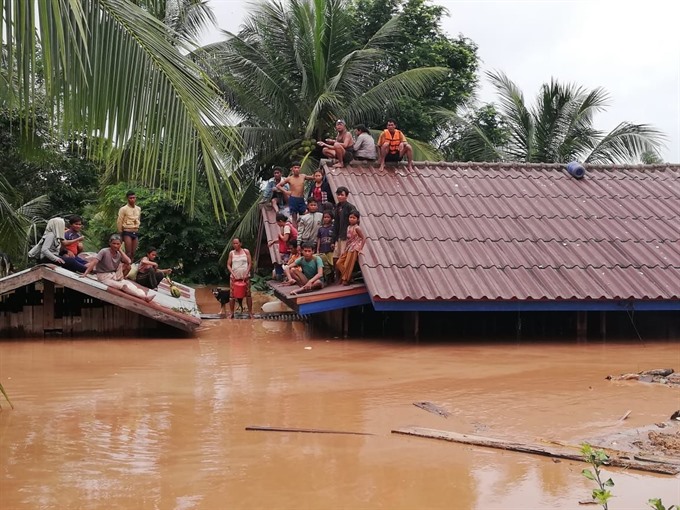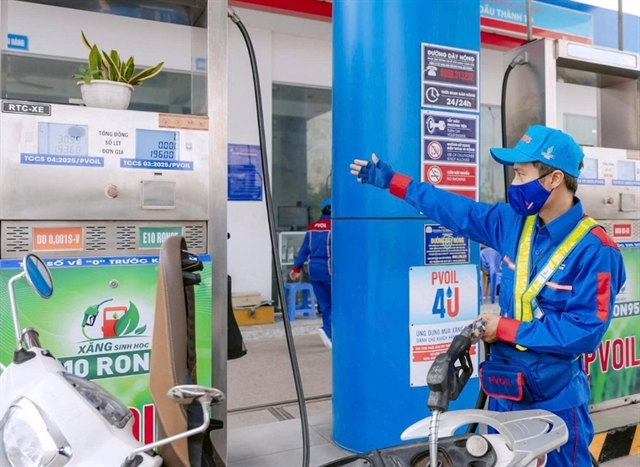 Society
Society

Twenty-six workers, including one Vietnamese from Hoàng Anh Gia Lai Joint-Stock Company, will be removed by helicopter from a flooded area this morning after the collapse of the Xepian-Xe Nam Noy hydropower dam in the Lao province of Attapeu on Monday (July 23).
 |
| Villagers are seen stranded on rooftops of houses after an under-construction dam collapsed in Attapeu, Laos, on Tuesday. — XINHUA/VNA Photo |
HÀ NỘI — Twenty-six workers, including one Vietnamese from Hoàng Anh Gia Lai Joint Stock Company, will be removed by helicopter from a flooded area this morning after the collapse of the Xepian-Xe Nam Noy hydropower dam in the Lao province of Attapeu on Monday.
Nguyễn Nhật Hóa, director of the Hoàng Anh Gia Lai Joint Stock Company’s Đại Thắng Company, said by phone to Vietnam News Agency that the company had hired helicopters to bring its workers out of the flooded area at 10am on Wednesday, adding that the 26 workers were in good condition and happy to hear about their rescue.
They have been isolated in the Paksong district of Champasak Province, which borders Attapeu to the east.
According to the Lao Prime Minister’s Office, 34 people are missing and more than 1,000 houses have been affected.
Earlier, 18 bodies were found, not 28 as was initially reported, according to local officials.
Laos News Agency said the accident at the hydropower dam in southeastern Attapeu province’s Sanamxay District occurred late on Monday, releasing five billion cubic metres of water, equivalent to more than two million Olympic-size swimming pools.
Several houses in the southern part of the district were also swept away, the news agency said, and officials in the province put out a call for relief aid for flood victims.
The US$1.2 billion dam is part of a project by Vientiane-based Xe Pian Xe Namnoy Power Company (PNPC), a joint venture formed in 2012 between a Lao, a Thai and two South Korean companies, according to the project’s website.
The 410-megawatt capacity plant was scheduled to start commercial operations by 2019.
The plant was expected to export 90 per cent of its electricity to energy-hungry Thailand, while the remainder would be offered to the local grid. — VNS




